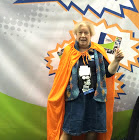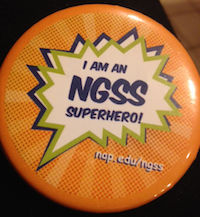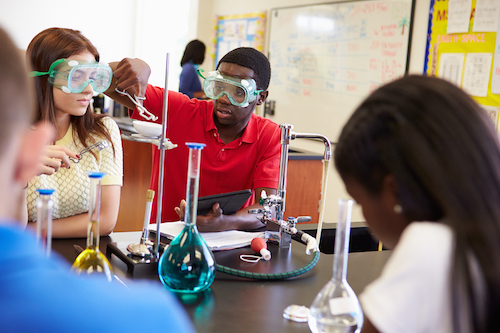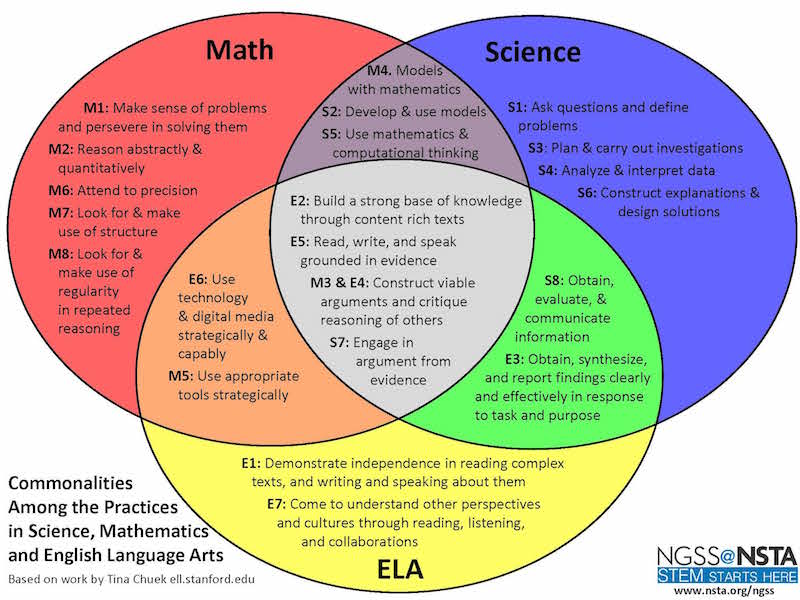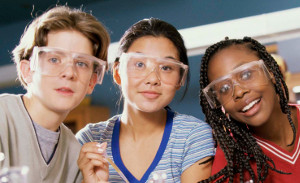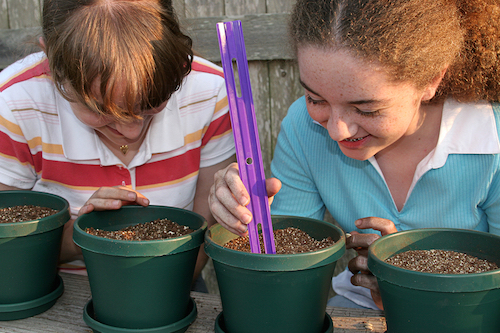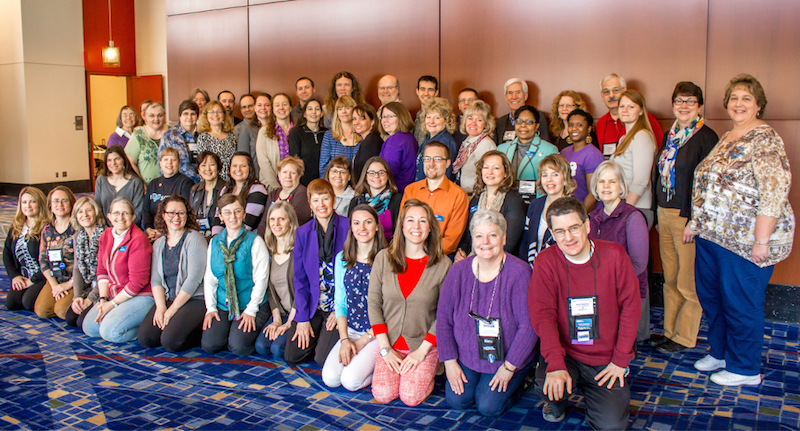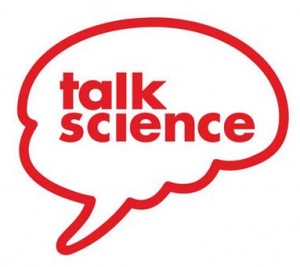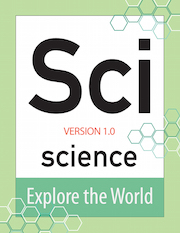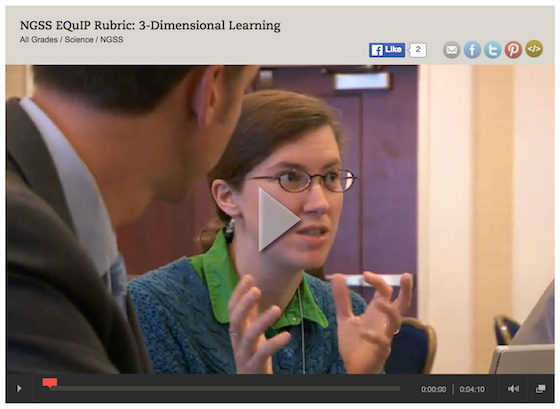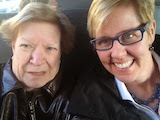How To Become an NGSS Superhero
Kathy Renfrew is Science Assessment Coordinator for the state of Vermont, a 30+ year teaching veteran, and a longtime advocate for science education in grades 4-8. She is also a prominent proponent of the Next Generation Science Standards and serves as one of 55 national NGSS@NSTA curators.
I recently found a pin that says “I’m an NGSS Superhero,” and it has me wondering about the qualifications for such a prestigious label.
Here are some of my current thoughts about how one might earn the right to wear this emblem (and perhaps the cape!).
A Next Generation Science Standards Superhero:
- has a vision that NGSS is a land of opportunity for students and educators;
- believes that NGSS was created for ALL students;
- is an advocate that understands NGSS can only take root and be fully implemented in a culture of learning and respect;
understands that the 7 shifts of NGSS are necessary shifts in science education;
- has growth mindset – an open mind that allows new learning and uses that new learning to make changes in instruction;
- understands that science instruction in a classroom must change if students are to be engaged in three dimensional learning;
- has a willingness and desire for collaboration because of the understanding that the best thinking comes from people working together, including students, who have a voice and choice;
- understands that that NGSS is not only revolutionary but also evolutionary.
Students are producers of knowledge
The vision of the Next Generation Science Standards supports a world of learning and opportunity for students and educators. We just have to imagine the possibilities. In this world students are not receptacles of knowledge but producers of knowledge using science and engineering practices, crosscutting concepts and disciplinary core ideas.
Students are engaged in the work of scientists and engineers. They are thinking, investigating, researching and communicating as scientists and engineers. They understand that science is real and changes with new learning and understanding. Educators play a huge role in moving students into this land of opportunity. Educators are the facilitators of the learning. They are asking the best questions and creating instruction that has a context and is relevant to the lives of students.
A NGSS superhero must be willing to shout out this vision and do anything within his or her power to make the NGSS vision a reality.
NGSS was created for ALL students
All students have the right to a quality science education. NGSS wasn’t created for only the advanced or gifted child but was developed so that every student regardless of his/her language, socioeconomic level, or disability will have the opportunity to engage in quality science instruction.
The integration across disciplines expected in full implementation of NGSS will have a huge impact on students who have previously struggled in science because it was taught in isolation with no connections to real life. The inclusion of engineering opens the doors to students who may have been marginalized in traditional science classes.
When students are solving problems in their local context, science begins to have a purpose, a connection to their lives. These connections allow students to learn science in a manner that makes sense to them. This is one of the ways NGSS is revolutionary. It is a huge change in our thinking about science instruction, opening the door to ALL students.
My idea of an NGSS Superhero is someone who is the voice of ALL students, someone who makes science accessible to all.
A classroom culture of ownership and respect
For the best implementation of NGSS to take place, there needs to be a culture of learning and respect. An NGSS Superhero would be instrumental in collaborating with students, developing norms and safety nets so that ALL students felt safe and valued.
This culture is critical for student to student discourse to occur, and that is an expectation of the new standards. Students need to share their ideas, ask each other questions, probe each other’s thinking in order to make meaning of the science concepts. Without the culture in place it will not happen; students won’t just know how to listen to each other, or how to ask each other appropriate questions.
It is the job of the NGSS Superhero to provide the instruction and tools so that students can begin to experience the depth and breadth of learning that is possible in science.
Shifting the ways we learn science
The NGSS Superhero knows and appreciates the conceptual shifts that are part of the Next Generation Science Standards.
► The first shift we have to address with full frontal force is the three dimensional learning of NGSS. In this shift students will be using the science and engineering practices, the crosscutting concepts, and the disciplinary core ideas to make sense of the way science occurs in the real world.
When students are given an opportunity to explain phenomena or design solutions to problems using the disciplinary core ideas, the science and engineering practices and crosscutting concepts, then they are engaged in three dimensional learning.
► The next shift the Superhero will have to deal with is helping teachers understand that the standards have been written as performance expectations – assessment targets that students need to meet after instruction. The performance expectations are not curriculum. The NGSS Superhero will help design curriculum and instruction that will assist students in making sense of the science.
Prior to NGSS, there were loads and loads of labs and activities in science, but there was nothing linking those activities. Students went from one activity to the next without understanding the purpose of any of them. Full implementation of NGSS would get rid of all those black boxes and gaps. The NGSS Superhero will be collaborating to create coherence in learning. The NGSS Superhero will be creating a coherent content storyline that is relevant and meaningful for students.
► Another big shift that the NGSS Superhero will work to implement is the integration of science and engineering. The engineering needs to be more than just application. Superheroes can help students use problem solving and engineering to understand the science concepts. This is where the real meaning of STEM comes into play – science, technology, engineering and mathematics.
► The Next Generation Science Standards are also shifting our perspective about our students’ future lives and careers. With the guidance of classroom Superheroes all our students will be ready to be citizens of the society, prepared for career training or ready to learn more advanced science in college.
► Last but certainly not least, we need to make intentional connections between science standards and the standards for mathematics and literacy. Part of the work for a NGSS Superhero is to be explicit about those connections. This shift is especially important in the upper elementary grades, where science has long been an afterthought, to be addressed occasionally when the mathematics and literacy learning was done.
Above all, an NGSS Superhero is a science shapeshifter!
Growth Mindset and the NGSS
So what’s the connection between growth mindset and a well-prepared NGSS Superhero? It begins with our own mindsets. We need to know that the implementation of NGSS will be hard work. We will struggle, have a small success and then find ourselves back in the struggle again. A NGSS Superhero needs to be okay with that. We have to give ourselves and the colleagues with whom we’re collaborating the permission to make mistakes and then try again. Mistakes equals learning.
We also have to be ready to encourage risk taking among our students and to help foster the growth mindset culture of learning and respect in the classroom. We may have to help students unlearn some of their current habits of dependency and a “talent not effort” mentality. Students will need to be praised for the effort and the perseverance they put into solving meaningful, relevant problems.
The big job for the NGSS Superhero will be to model and affirm the value of persistence in achieving success.
The NGSS Superhero has more to do
The Superhero will assist other teachers in acquiring the diverse range of teaching strategies necessary for implementation of three dimensional learning. Teachers must be able to make decisions on the spot, change the plans and move fluidly between direct instruction, student designed and led investigations, and problem solving challenges – to name a few.
Superheroes will help teachers build tasks and problems that will allow students to make sense of the science. Superheroes know that as part of instruction students must be provided with the opportunity for regular student to student discourse. Talking provides students with an opportunity to try out their tentative explanations, to share their ideas based on evidence. Discourse in the science classroom allows students to probe each other’s thinking. An NGSS Superhero will help this happen by working with other teachers as well as students, facilitating meetings with scientists, and providing tools and strategies for science talk to take place.
Download the Science Talk Primer from TERC
Read these Science Talk Tips at the Teaching Channel
Discourse needs to be a part of everyday instruction in the classroom. Spending the time building the culture of learning and respect will be well worth the instructional time. Discourse also crosses all the disciplines, a huge plus for making it happen in the classroom. After students have had time to talk (a rehearsal for writing), then Superheroes can collaborate and coach both teachers and students to write explanations created from claims developed using evidence from investigations.
Your Fellow Superheroes Can Help
The NGSS Superhero must understand that three dimensional learning is new and creating learning experiences for students is hard work. We cannot do it alone. Fortunately, there are many others who are willing to work with you. There are many resources becoming available.

all the ways you can begin to collaborate!
Finally, the NGSS Superhero must know that the Next Generation Science Standards are both evolutionary and revolutionary. Three dimensional learning is different than anything most of us have ever done in K-8 science instruction. Students are not receptacles to be filled, but students engaging in the habits of mind and practices of scientists and engineers.
NGSS is evolutionary because science is always changing; it has been changing over millennia. Now it’s time for the pedagogy to change. Pedagogy, as we all know, has most often been a slow evolutionary process. But with enough NGSS Superheroes, can we make pedagogical change more revolutionary?
Wow! After reading over what I’ve written, I’m thinking I will take my “I’m an NGSS Superhero” badge off my vest for now. I still have some work to do to earn this honorific. But I will keep working, thinking together with colleagues, always striving to become more like the NGSS Superhero I’ve described here.
The Teaching Channel, working with Achieve, has developed some terrific NGSS materials, including the EquiIP Rubric series and other video/text resources. Here’s a sample – find out what NGSS means by 3-Dimensional Learning:
Kathy Renfrew, who taught grades 4 through 6 for many years in a self-contained classroom, confesses to once having been a “science phobic” classroom teacher. “I changed all that in the 90’s when I was introduced to inquiry science!” A National Board Certified Teacher and a 2000 recipient of the Presidential Award for Excellence in Science Teaching, Kathy is currently the K-5 Science Assessment Coordinator for the Vermont Agency of Education.
“I have been working intimately with NGSS since its development began,” she says. “The more I dig, think and talk, the more I learn. In the past few years I am especially proud of the work and learning I have done in collaboration with Carla Zembal-Saul, Mary Starr and NSTA!“

